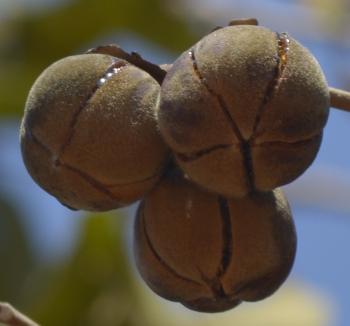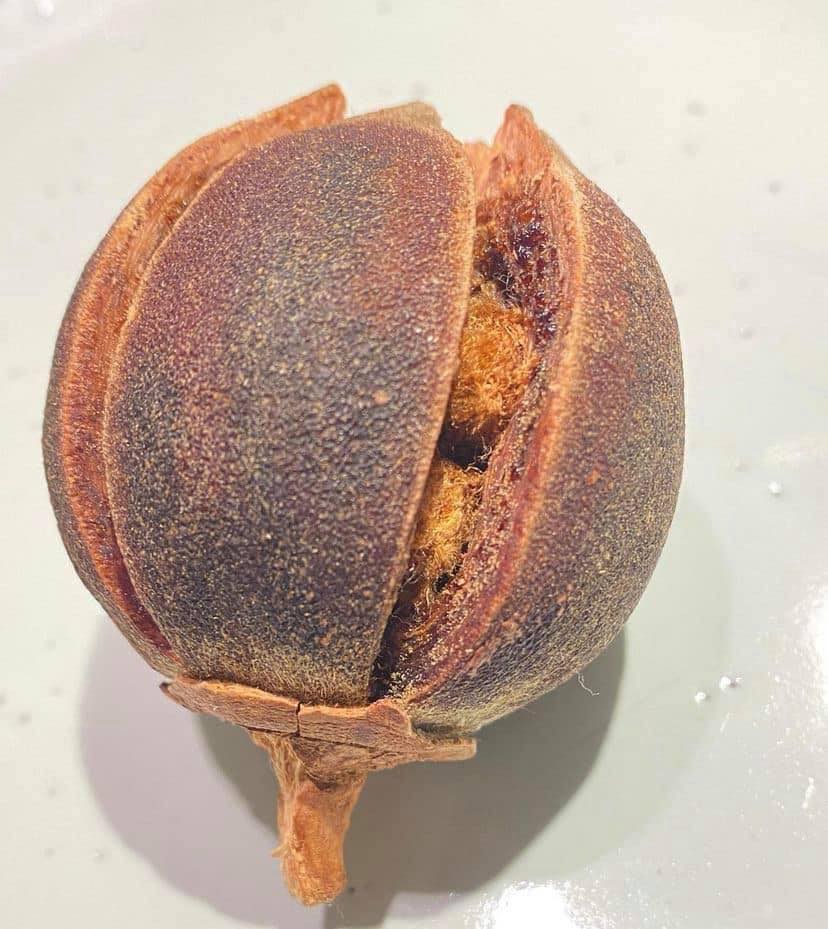Thespesia garckeana (also known by its synonym Azanza garckeana) is a tree in the family Malvaceae, found throughout Zimbabwe in wooded grasslands, open woodland and thickets.
Common names: African chewing gum, goron tula, snot apple, tree hibiscus, mutohwe (Shona), uXakuxaku (isiNdebele) and morojwa (Setswana).
Benefits of the fruit
- nutrients present in the fruit help cleanse the body system and prevent diseases like cancer, diabetes, high blood pressure, and fertility challenges.
- it serves as an aphrodisiac and aids against liver problems, and mental illness among other diseases.
- it assists in improving bowel movement, eases digestion and improves the body’s immune system. Most importantly, it is safe for consumption across all ages.

Uses
- The whole fruit except the seeds is chewed like gum, producing a sweet glutinous slime. The fruit is also used as a syrup and soup.
- The sap wood is yellow and the heart wood is a deep brown. It is easily worked but generally only suitable for small building needs, tool handles, oxen yokes, and domestic items such as spoons.
- The leaves of the snot apple tree have many uses including green manure and mulch. The leaves also provide an often used fodder.


According to Alfred Maroyi a researcher in his publication in the research journal of medical plants, the ripe fruits are edible and widely used as food additives throughout the distributional range of the species.
“The species is used as herbal medicine for diseases and aliment such as chest pain, cough, infertility, liver problem, menstruation problem and sexually transmitted infections,” he said.
The researcher said multiple classes of compounds including alkaloids, amino acids, ascorbic acids, carotenoids, lipids and tannis have been isolated from the fruits, adding that studies indicate that the species has a wide range of pharmacological activities such as anti-bacterial, anti-fungal, anti-malarial, antioxidant and iron absorption to mention a few.
Zimbabwe News, Dandaro Online







